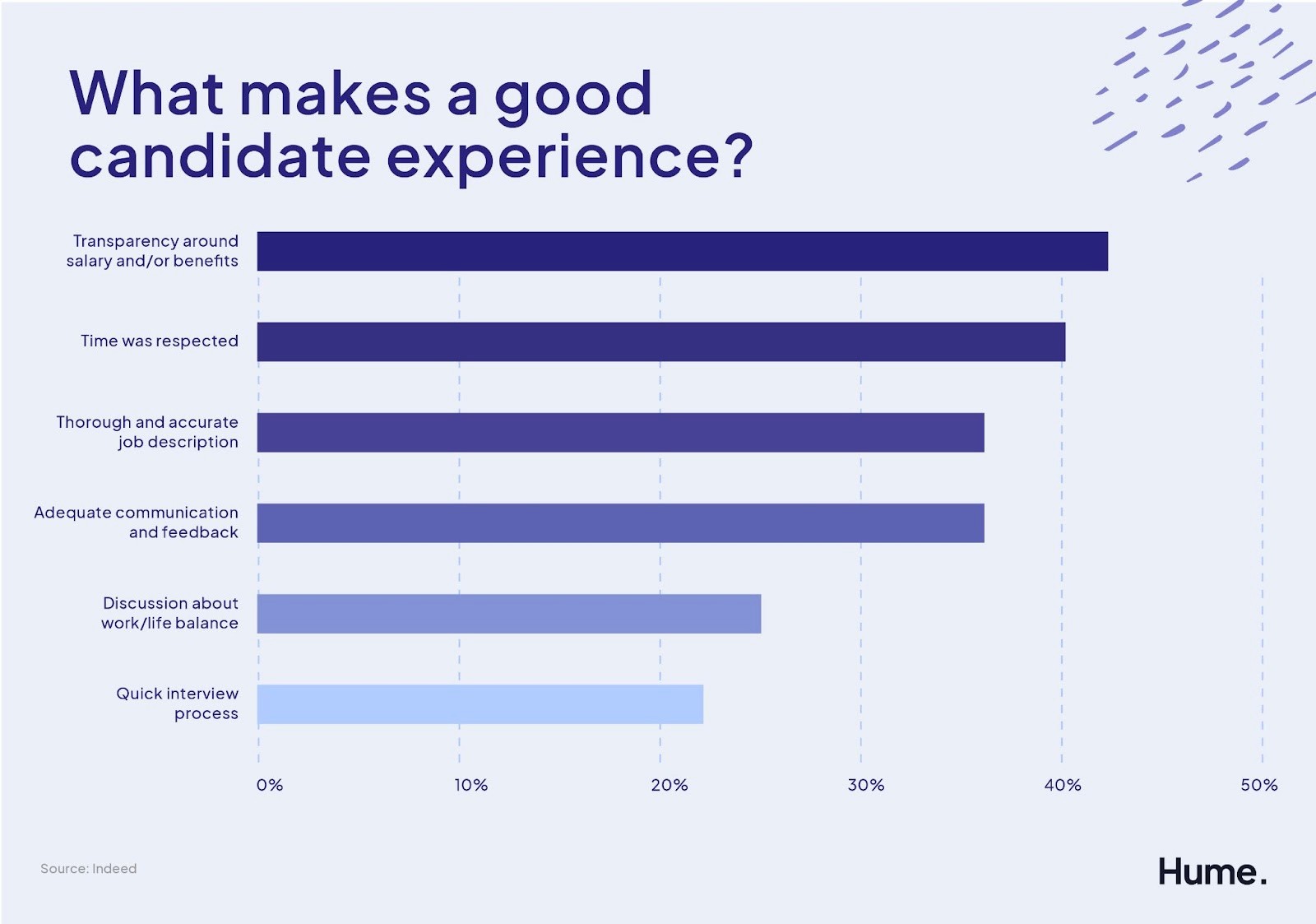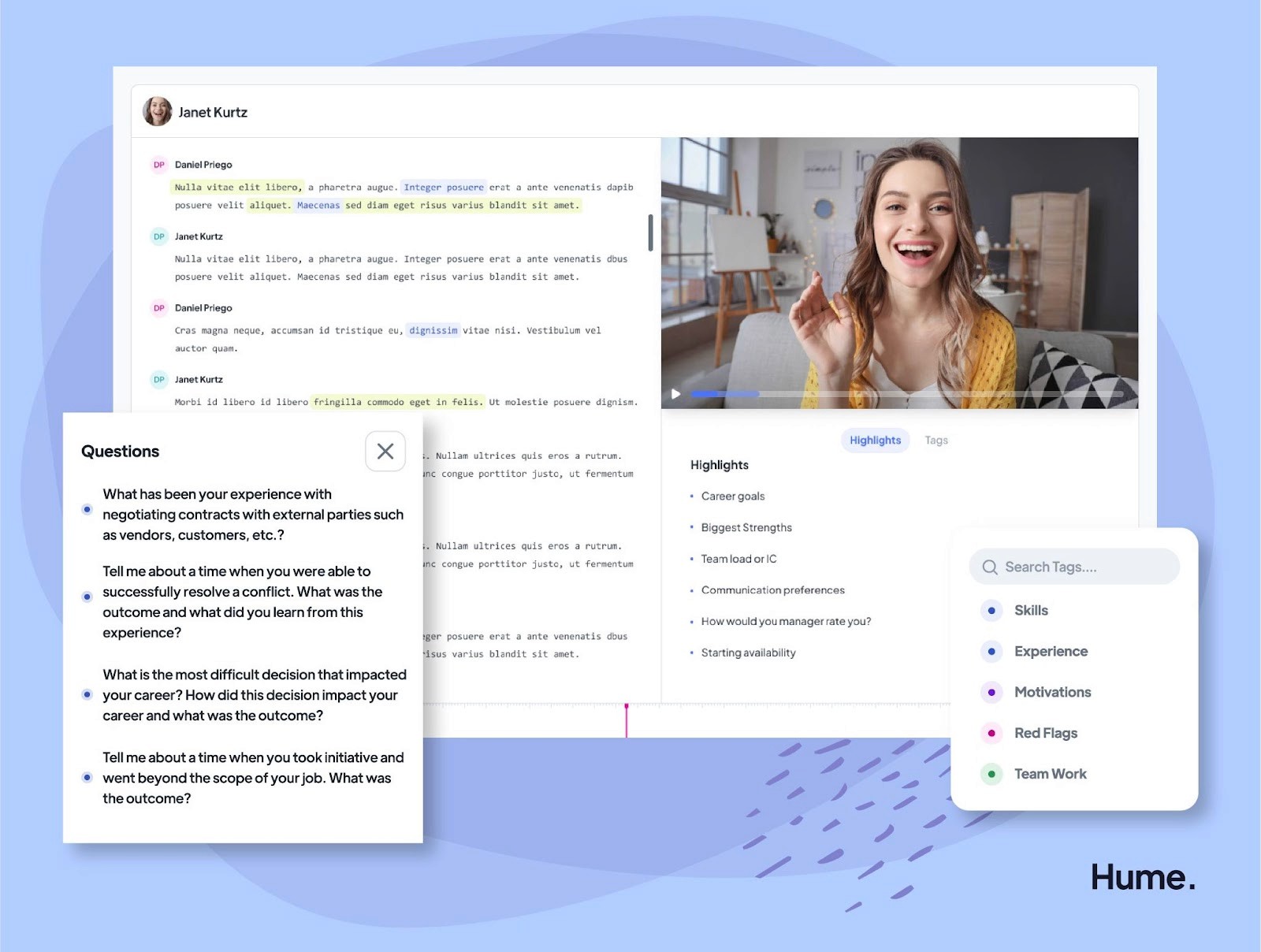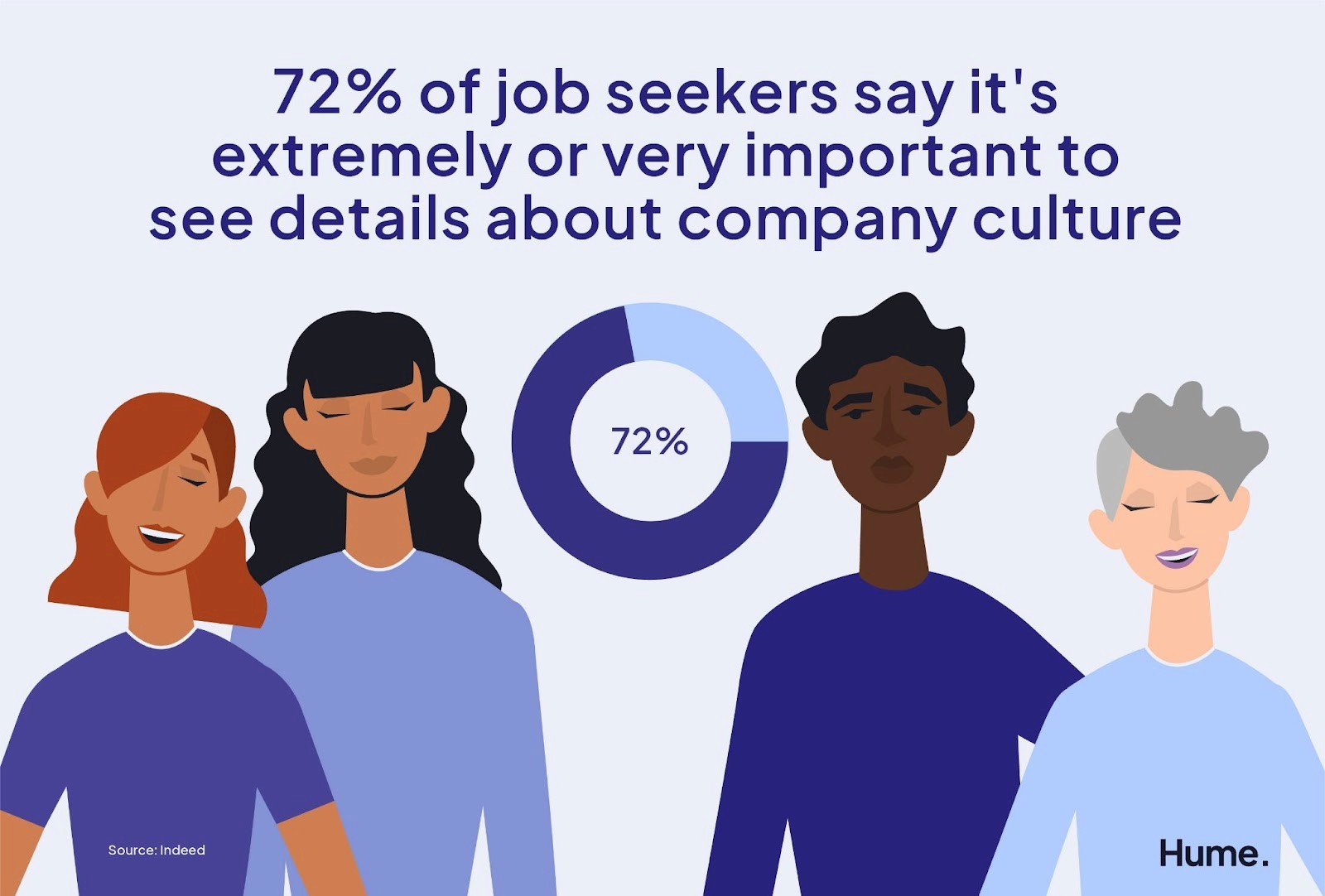How to Improve the Candidate Experience in Hiring
How to improve candidate experience: nine ways to bolster your company brand, widen your hiring pool, and ensure every prospective employee feels valued.
5.0

Add an AI assistant to your interviews
Start with 5 interviews for free
Already have an account?
Log in
Hiring is a delicate dance between employer and job seeker.
While it's vital for hiring managers to tap the best candidate for job openings, it's just as important to see the recruiting process from the talent's perspective. Their experience impacts your employer brand and affects whether accepted applicants take you up on that job offer.
So putting yourself in the candidate's shoes, what do you see? Is your company accessible, communicative, and transparent? Or is the candidate journey fraught with confusion, unresponsiveness, and a slipshod interview process?
No matter where you fall on that spectrum, the job seeker's impression of your hiring process is always worth improving. So read along for everything you need to know about how to improve the candidate experience.
What is candidate experience?
First things first: the candidate experience is the sum of all interactions, impressions, behaviors, and attitudes job seekers have with a company during their job search. It encompasses every stage of the candidate journey — from when candidates first learn about a company all the way to when they accept an offer and begin onboarding.
What are the hallmarks of a positive candidate experience?
Job seekers report positive candidate experiences if recruiters and hiring managers:
Communicate realistic expectations for the job
Provide a seamless application process
Ensure a smooth and fair interview experience
Provide insight into company culture
Are kind, respectful, and transparent with every candidate at every stage of the journey
Process applications quickly
Make themselves accessible for questions about the job and application process

Why the candidate experience matters
In the throes of the great resignation, candidates across industries are reevaluating their relationship with work, in search for employers who value their interests and treat them with respect. This to say: how you treat your hiring pool matters!
You can try to choose the best talent for your role, but at the end of the day, the best candidates choose you. And in 2021, 58% of job seekers declined a job offer because of a poor candidate experience.
Perils of a bad candidate experience
Bad candidate experiences don't just linger with your company, they spread. According to research, 72% of job seekers who had a negative experience told people about it (either virtually or directly).
One word-of-mouth horror story, Twitter thread rant, or Glassdoor pan can make countless top tier candidates less interested in working for your company. In fact, 55% of candidates who have read a negative review about a company decided not to apply. That's a lot of missed opportunity.
Benefits of a good candidate experience
Great candidate experiences can be just as prosperous as poor ones are damaging. Eight out of ten candidates report that a good experience influenced decisions to take a job offer. What's more, 61% of candidates said they've left positive reviews after positive candidate experiences.
Keep in mind that you don't need to offer a candidate a job to ensure they report a positive experience. But you do need to hear them out. Here are some other perks:
Grow your talent pool. A dragged-out process means candidates will abandon ship before finishing an application. A good experience widens your hiring pool (and bolsters candidate retention) by encouraging more people to apply.
Create a better first impression. No one likes crafting a thoughtful cover letter only to get completely ignored. According to a 2021 report, more than 80% of candidates say that it's important for companies to respond to initial applications. Communication early in the process could make job seekers likelier to accept an offer later on.
Improve employer brand. The candidate experience isn't just a recruiting concept. It's free recruitment marketing. According to LinkedIn, 83% of employers say their brand plays a substantial role in their ability to make good hires. Stellar candidate experiences can quickly bolster your company's reputation.
9 tips for improving the candidate experience
A good candidate experience is only getting more crucial: 53% of job seekers say they care more about it now than they did before the COVID-19 pandemic.
But if your current methodology is lacking, it's never too late to improve the hiring process. Here's how to accomplish just that.
Ensure a fair and transparent interview process
Interviews are usually the most important component of the job application. But without structure, they're riddled with biases that render them terrible predictors of job performance.
Not only do unstructured interviews leave you in danger of hiring the wrong candidate. They can also be a colossal drag on candidate experience — 83% of a surveyed talent pool said a lousy interview process can change their mind about a role or company they used to like.
How do you ensure that never happens? Interviews need to be equitable, consistent across the entire hiring pool, and evaluated by more than just one person. And while structuring them to ensure this kind of fairness can be tricky, you don't have to do it alone.
There's always Hume, a talent intelligence platform that transcribes and tag interviews to share with your hiring team. It seamlessly turns the raw data of your candidate conversations into a goldmine of annotated information that helps you make informed hiring decisions.

By turning entire interviews into verbatim transcripts, Hume keeps you focused on the job seeker on the other side of the screen without having to furiously scribble notes down.
One of the best ways to measure candidate experience is by getting data-driven feedback. Hume provides just that, by collecting helpful metrics (things like their speak vs. listen ratio, how many questions were asked vs. answered, and longest monologue) to guide interviewers toward a consistent process across every interviewee, ensuring every candidate is fairly evaluated.
Hume. also lets you "highlight" the most illuminating exchanges from candidate conversations, which you can then easily share with colleagues. This turns interviews into actionable insights that your entire company can weigh in on in a moment's notice
Want to learn more about Hume in action? Hop on the waitlist to see how it can enhance every interviewee's candidate experience.
Communicate early, often, and frequently
The more you engage with your candidates, the better their experience will be. That may sound obvious, but so many companies are dead quiet when it comes to shooting job seekers updates about their application, specifying compensation, and answering spare questions about the role at hand.
According to a Talent Board report, 47% of candidates were still waiting to hear back about a job two whole months after applying. What's even scarier: 85% of candidates worry no one even looked at their application.
It never hurts to follow up.
So speak with your candidates! Make sure everyone gets a message informing them their application has been received (if you're processing a high volume of candidates, it helps when this step is automated). If a candidate asks a question after they've applied, answer it quickly transparently — even if they likely won't be someone you hire
While rejection can frustrate job seekers, most would rather be informed of not getting a role than not hearing any updates at all — nine out of 10 actually expect to hear back.
You may find writing a rejection letter cumbersome, but it's an important part of a positive candidate experience. Keep in mind that the further along a prospective employee is in the hiring process, the more personalized the rejection letter should be.
Create a feedback loop
Since the candidate experience encompasses every hiring stage across multiple touchpoints, it can be tricky to measure. But one of your best barometers is your existing hiring pool.
Candidates themselves almost always have thoughts on how their experience can be improved. Why not ask them? At every stage of the hiring process, send easy-to-fill out surveys to both accepted and rejected candidates, asking how satisfied they are with the overall recruitment experience. You won't always get responses, but each candidate you hear from paves the way for smarter practices down the road.
During the most positive candidate experiences, this kind of feedback runs both ways: hiring managers are constantly giving guidance to job-seekers, while job seekers feel empowered to speak candidly about recruitment practices to hiring managers.
Provide a smooth and rewarding application process
Two thirds of candidates give up on job applications because they're too long or complicated. Passive candidates likely won't spend time completing an application that takes more than half a day, and most job seekers probably find that quickly applying to three jobs is more worthwhile than spending ages applying to just one (provided the jobs are all similar).
You can streamline applications by making them mobile-friendly, asking fewer questions, and saving reference checks for later stages. If you have a company website, broadcast the job opening on your careers page. You can also host it on a career site so that it's easier to find. Anything to make the process more succinct here will solicit more completed applications and be a value-add.
Process applications quickly
Not only should you ensure candidates can apply quickly. You should look at their credentials quickly, too.
The measure for how quickly and effectively — in other words, efficiently — you’re able to hire is called time to hire. Generally, the lower this number, the better (within reason).
Why? Because top talent is typically hired within ten days. That's almost two weeks shorter than the time the traditional interview process takes (23 days). And according to a LinkedIn survey, it takes two to three months for most applicants to get hired.
Time is of the essence. Especially since your top talent is weighing other offers. If you find a candidate you think would be a great fit, get them in for an interview soon. If you immediately know one candidate isn't properly qualified, promptly let them know you're looking elsewhere.
Also, keep in mind that if a job seeker gets an offer within a week of their final interview, they become 62% more interested in working with you.
Read the full guide to reducing time to hire here.
Introduce candidates to colleagues
Candidates in later stages of the application process like knowing who they'd be working with if they take a job. You don't want to surprise a new hire with on-the-job duties that were never brought up in the application process. The same holds true for the people they'll interact with every day.
Collegial introductions can take the form of an interview panel, where supervisors take turns debriefing with the candidate. Out of respect for everyone's time, these don't have to be long. Even a five-minute chat helps job seekers assess cultural fit, while being a lower-stakes environment than the longer, more formal interview.
Improve that job description
How are you describing your role? Candidates want no-nonsense job descriptions that are clear about skills required and company culture. Make sure you're not omitting important responsibilities or diving into excessive detail about personality traits that have little to do with on-the-job performance.

A surefire way to bolster candidate experience is to include a salary range in your description — as almost a quarter of job seekers think compensation is the most important part of a job listing. More often than not, this detail is excluded, so providing salary expectations helps you stand out.
It's also worth including the perks and benefits your company offers in the job description (when applicable). If your company offers unlimited paid-time-off, summer Fridays, or wellness stipends, let your hiring pool know!
Don't just tell candidates what work is like — show them!
When done right, applications, assessments, and interviews can help you discover the best possible candidate. But on their own, they fall short of showing what a day in the life at work with you is actually like.
Providing this sort of on-the-job context helps candidates discern whether they'll vibe with company culture. They're also less likely to feel surprised with aspects of the job that never came up in the recruitment stage.
This is easy to do in person, by letting prospective hires shadow an employee for a couple hours or virtually, by providing day-in-the-life simulations that showcase how your team operates and what your company values.
Be kind
Some of the best candidates in your hiring pool — people you've interviewed, gotten to know, and asked a lot of throughout the application process — may not end up getting that coveted offer. And that can sting. But the best thing you can do is maintain that relationship.
Not only is keeping in touch the right thing to do. It's good for your company, as past candidates are significantly more likely to reapply for future job openings if they had a good experience.
So if a candidate you love misses the mark, break the news gently, give them constructive feedback, connect with them on social media, and reach out from time to time to see how their job search is going. They could be a stellar hire for your next role that opens up.
Supercharge your candidate experience with Hume
We hope we've convinced you by now: candidate experience matters. And the number one reason why job seekers turn down job offers is lousy experiences with the interview process.
But Hume is a trusty companion that ensures interviewees feel understood and objectively considered. By automating processes that are otherwise bias-prone, not only will you ensure top-notch candidates never slip through the cracks. You'll enhance the experience for every job seeker you interview.
Check out Hume's homepage to sign up for the waitlist and follow us on LinkedIn to learn how to improve the candidate experience for all.
Imagine transforming every interview into a strategic advantage. Dive deep into every conversation, free from the distraction of note-taking. This isn't just wishful thinking – with Aspect, it's how you'll redefine your hiring process.
Beatriz F
People Success Specialist
Absolutely game-changing for busy recruiters!
The summary, the Q&A feature and the ATS integration have boosted my productivity and lowered the context-switching stress, the analytics provided allowed for me and my team to have full visibility over our stats, and Aspect's team couldn't be more helpful, friendly and accessible!
More Content On Talent Acquisition

